Head & Neck
Cervical Disc Herniation - Slipped Disc in the Neck
A cervical disc herniation often causes severe neck pain. The disc often presses on a nerve root which also causes pain and other symptoms like pins & needles, weakness and numbness into the arm. Actions like sneezing, coughing, looking down and to the side aggravate pain levels. Characteristically there is a sudden onset of pain, possibly after trauma with the likelihood of prior neck complaints. It most commonly develops within the 25-50 year old age range with the highest incidence between 35-45 years. In most cases, the symptoms ease off gradually over several weeks.
Cervical Degenerative Disc Disease
Cervical degenerative disc disease known as cervical DDD is in fact not a disease and medical professionals even debate whether it is in fact a degenerative condition. The misleadingly named diagnosis is used as a term to describe a condition that affects the discs in your spine (not including a disc herniation) and accounts for a lot of neck pain cases. It can occur naturally with age; most people over 30 will have some form of disc degeneration present within their spine.. Others may experience symptoms at an earlier age, developing after trauma or repetitive injuries to the neck.
Initially cervical DDD presents itself as moderate to severe neck pain and stiffness that comes and goes. The pain has been described as a sharp pain, an intense dull ache almost like toothache and also like a burning sensation.
Rheumatoid Arthritis in the Neck
Rheumatoid arthritis (RA) is a relatively common condition affecting three times more women than men and normally developing between the ages of 40 to 50, although it can affect people at any age. RA has the ability to develop in any joint of the body but most commonly it affects the hands and feet. Spinal RA is less common.
Symptoms begin as joint and muscle stiffness, particularly in the early mornings with symptoms starting to ease 2-3 hours after getting up. After a few weeks the same joints that have been stiff may become painful and swollen. The pain will feel like a deep throbbing ache that is aggravated by rest and certain levels of activity. The swelling levels during a flare up also cause the skin around the spine to be extremely tender and slightly warm to the touch.
Torticollis is also known as Wry Neck or a twisted neck. There are three types of torticollis; the first is congenital muscular torticollis, the second is spasmodic torticollis and the third is acquired torticollis. The most common type is acquired torticollis which onsets suddenly over night and will be felt on waking in the morning. There will be an intense spasm on one side of the neck, so much so that the head is completely tilted towards the shoulder. Neck, upper back, arm pain and stiffness often accompany the intense neck spasm. These symptoms are normally short lived and start to ease after 24 - 48 hours.
Head & Neck - Myofascial pain syndrome (muscle pain)
Myofascial pain (muscle pain) can result from sprains or strains of a joint, excessive repetitive movements and high stress levels. Risk factors like poor posture, fatigue, heavy lifting and even muscle weakness may make you more susceptible to myofascial pain. Specific causes like stress normally cause quite a lot of tension in the upper shoulders and neck which can then lead to quite bad headaches.
Symptoms range from a sudden sharp pain, spasms and burning pain to a gradual build-up of a dull ache and discomfort that is worse in the evening after long days at work or activity. Muscle knots and trigger points can cause pain to refer from the injured muscle to the surrounding areas.
Cervical Facet Sprain (neck sprain)
A neck sprain or strain happens suddenly after an excessive or harsh movement. It causes stiffness and a sharp burning pain that radiates down the neck into the upper back, shoulders and arm. Rotating your head from side to side and looking up at the ceiling aggravate pain levels as do sitting in one position for too long. Ice packs, gentle movements and anti-inflammatory medication help to relief the pain levels. It is common to not feel pain and stiffness immediately after the sprain and then wake the next day to severe pain and a feeling that you can't lift your head off the pillow.

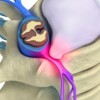
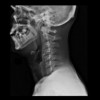
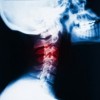
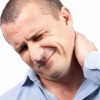
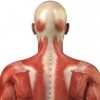
.jpg)